Why FieldSink
Groundwater Low Flow Purging & Sampling Procedure
Conventional Method
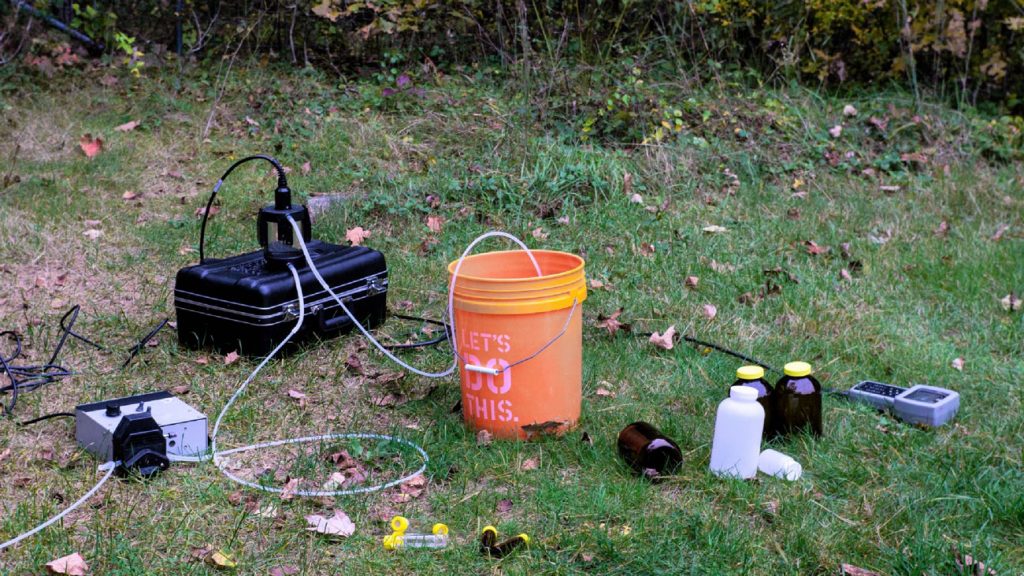
This should look familiar to all you groundwater samplers out there, a typical equipment layout to perform this well-accepted groundwater sampling procedure. At first glance this setup might appear to be fairly well organized and straightforward, but as I am about to show you, there are numerous critical improvements needed.
First up, why is it common practice when purging and sampling a monitoring well to stick the end of the tubing leading from the pump directly into our waste discharge container?
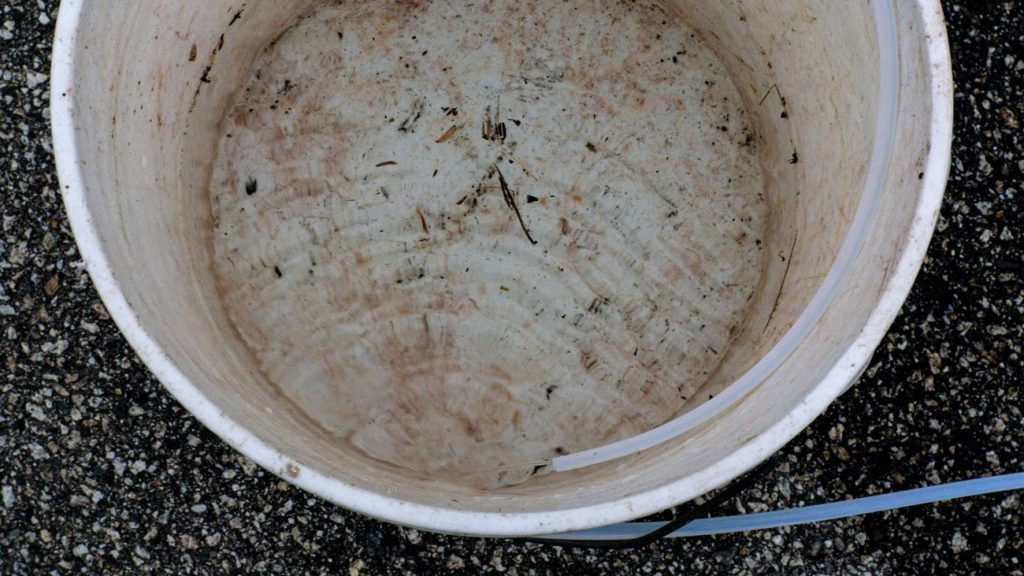
This has bothered me since my early days of groundwater sampling, mainly because I feel that the significance of the end of this tubing is often overlooked. This is the same end from which we collect our samples to be sent for laboratory analysis. From a cross-contamination standpoint, it’s probably not the greatest idea to have it rubbing against the inside of a potentially contaminated container or to have it come in contact with the contents being purged from the well.
The seriousness of this issue is most definitely realized when you consider contaminants like Per- and Polyfluoroalkyl Substances (PFAS) are now being analyzed down to the parts per trillion!
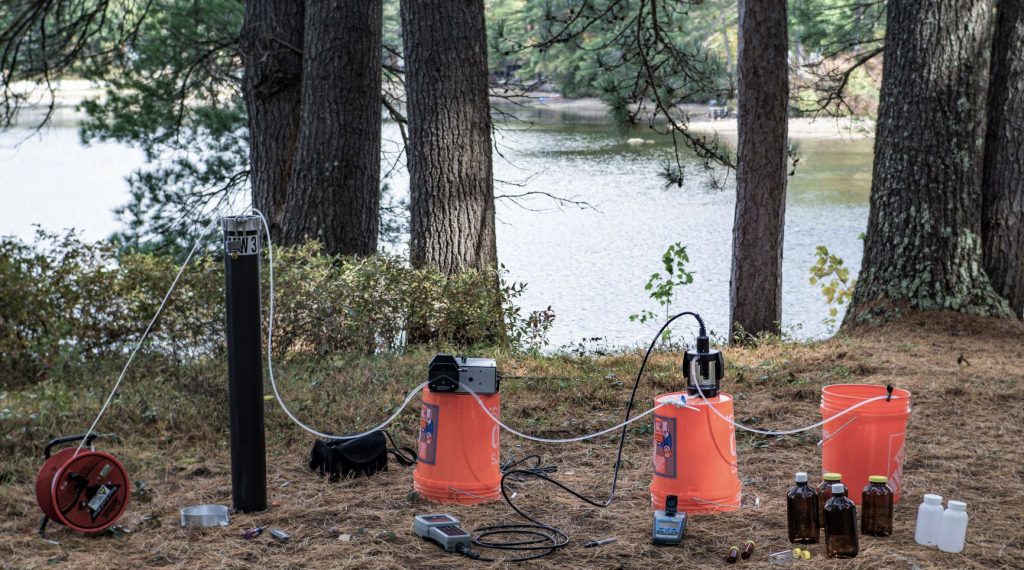
I’ve always been amazed at the acrobatics involved with preparing for sample collection. Groundwater is purged until both depth to groundwater and indicator field parameters are stabilized. Once stabilized, samples may be collected, but from where? The method instruction is clear that samples must be collected from the tubing connected directly to the pump. Easier said than done. The sampler holds the flow cell over the discharge container, disconnects the incoming tubing, and maintains control of this tubing while draining the flow cell. This is all performed without interruption to pumping operations.
Does this next scenario look familiar? Be honest, I’m sure this has happened to even some of the best samplers in the business. The pump vibrates the tubing which snakes its way out of the discharge container. In this situation not only do you have a potential cross contamination issue (same collection end of the tubing), but depending on how hazardous the conditions are, you might also have a potential release on your hands.
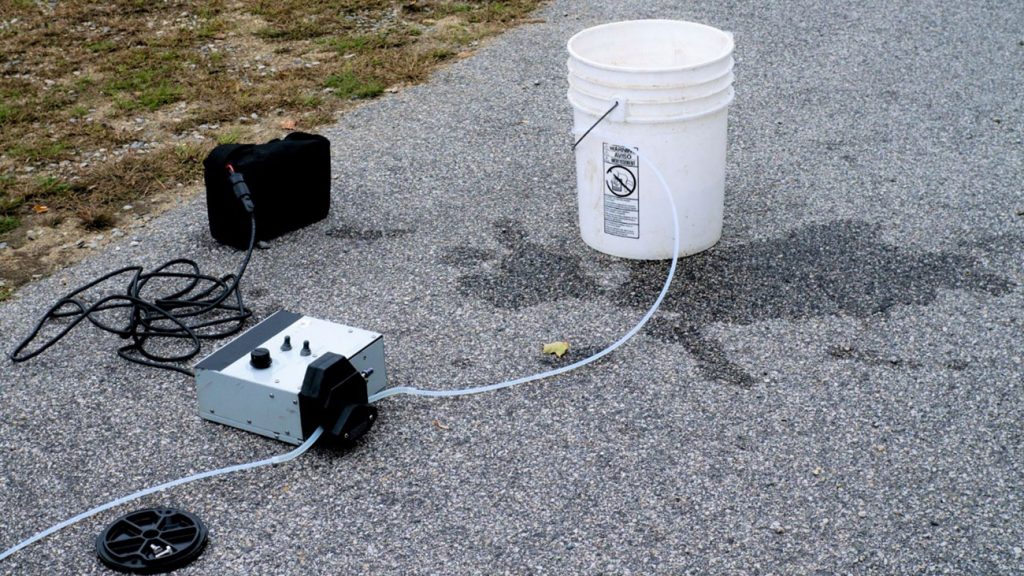
Maybe your answer is to use a clip at the top of the discharge container to secure the tubing and do your best to keep it from contacting the inside of the discharge container, but this brings me to my next question, have you ever noticed how much splash back there is from inside the container? I can tell you by experience that it is more significant than one might think. This is also surprisingly true for the filling of sample bottles. Next time you fill a wide-mouth one liter, take note of the splash back especially as you approach the top of the bottle. In both instances, when hazardous contamination is present, there is not only a risk to the environment, but also to the safety of the sampler.
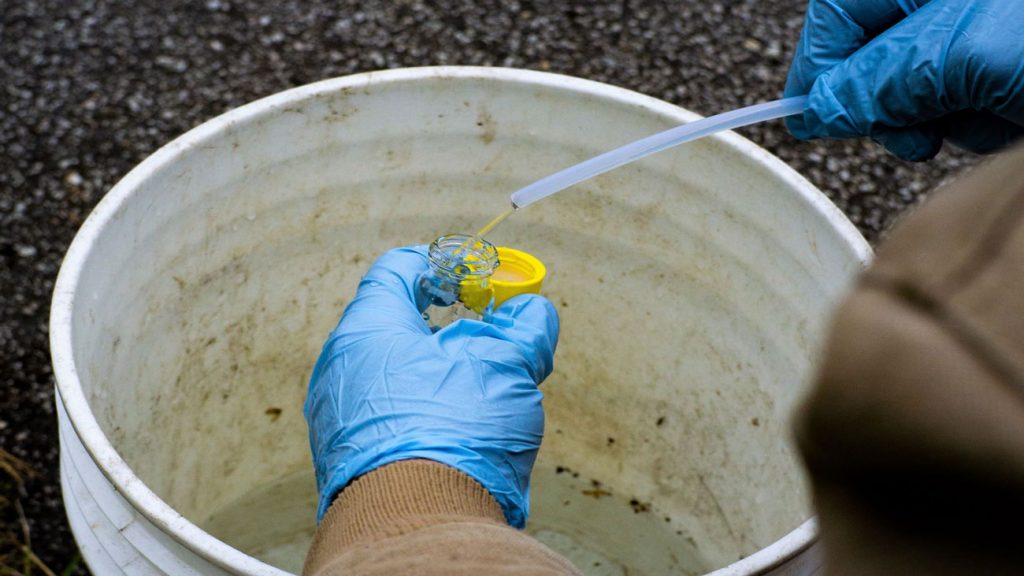
We really can’t talk groundwater sampling without asking how well you’ve perfected the old, no bubble, voa vial filling technique. It really can be a balancing act of holding the tubing in one hand, the voa vial and cap in the other, filling to the point of forming a meniscus, adding a drop or two from the cap (old sampler trick) to top it off without losing any preservative, and then slowly screwing the cap onto the vial, all while over the discharge container. I have always had the thought of wouldn’t it be nice to be hands-free to perform this surgical task and to find some way of staging those clumsy, fragile bottles.
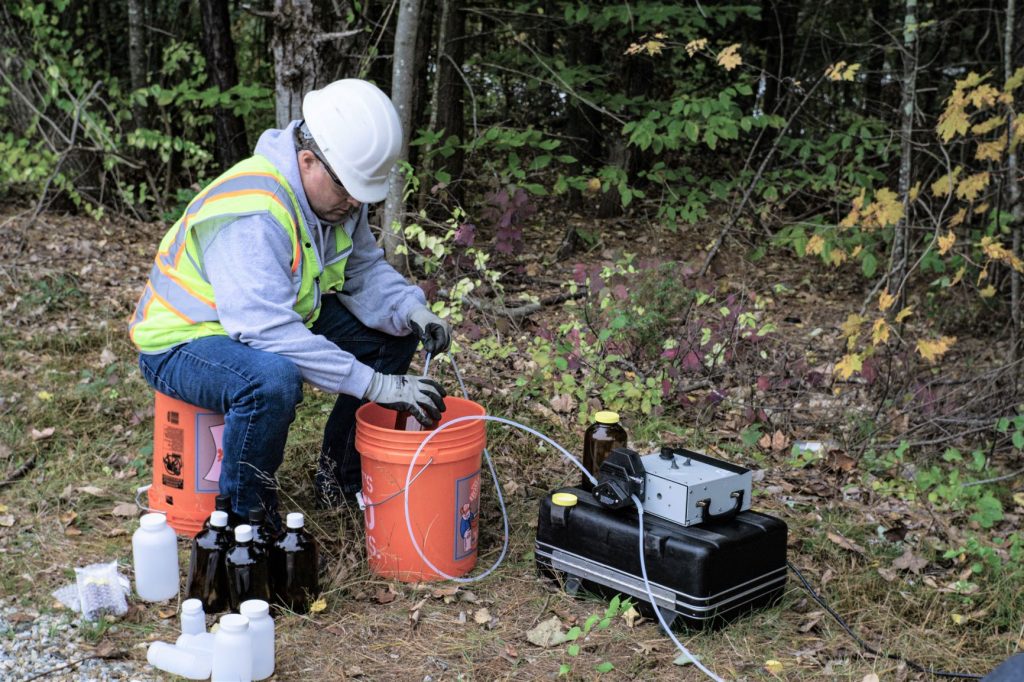
Now, I know all samplers can relate to this poor guy, frustrated with the monotony of holding a sample bottle in one hand and tubing in the other over a discharge container, filling bottle after bottle, sometimes drip by drip, all the while knowing that you could be doing something more constructive like taking notes, preparing labels, or working more than one sampling station. Also, there’s always been a part of me that just doesn’t like the idea of breaking the plane of a contaminated discharge container with my sterile collection bottle.
While we’re on the subject, here’s another often overlooked question, what do you do with the cap to the bottle during filling? Do you hold it in your hand? Set it on the ground? Truck tailgate? Just curious, because I believe the cap requires proper staging to avoid any additional opportunity for accidental cross-contamination.

 FieldSink™ Environmental Sampling Station
FieldSink™ Environmental Sampling Station